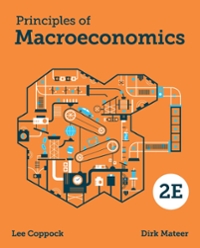!solve.
CASE 3
At the beginning of 20x2, Jericho, Inc. discovered the following errors made in the preceding two (2) years:
20x1
20x2
Overstatement of ending inventory
P100,000
P40,000
Omission of wages payable
14,000
16,000
Omission of allowance for doubtful accounts
26,000
34,000
Prepaid insurance recorded as expense
10,000
4,000
The reported net income was P540,000 in 20x1, and P700,000 in 20x2. The allowance for doubtful accounts had a zero balance at the beginning of 20x1. No accounts were written off during 20x1 or 20x2. Ignore income taxes.
REQUIRED:
Corrected net income for 20x1
Corrected net income for 20x2
15. You are a distributor of canola seed and need to make deliveries of 10,000 bushels one month from now. You currently have no canola seed in inventory. The current spot price of canola seed is $7.45 per bushel and the futures price for delivery in one month is $7.65. You would like to hedge the uncertainty about the spot price one month from now. (a) If your storage cost is $.15 per bushel (paid at the end of month), what would you do? (b) Suppose that in the short run, your storage cost increases to $.25 per bushel. What would you do? 16. Assume perfect markets: no transaction costs and no constraints. In addition assume that the one-month risk-free interest rate will remain constant over a three-month period. Two futures contracts with two and three months maturity are traded on a financial asset without any intermediate payout. The price for these contracts are F2 = $100 and F3 = $101, respectively. (a) What is the spot price of the underlying asset today? (b) Suppose that a one-month futures contract is trading at price F1 =$98. Does this imply an arbitrage opportunity? How would you take advantage of this opportunity? To get full credit, be precise on what you would buy or sell, and how much money you would deposit into a bank account and/or borrow. 17. Assume perfect markets: no transaction costs and no constraints. The one-month risk-free interest rate will remain constant over a six-month period. Two futures contracts are traded on a financial asset without payouts: a three-month (futures price F(t,t + 3)) and a six-month futures price F(t, t + 6)) contract. You can observe that F(t, t + 3) = $120 and F(t, t + 6) = $122. (a) What is the spot price of the underlying asset at time t? (b) Suppose that a three-month futures contract is trading at price F(t, t + 3) = $119.5. Does this imply an arbitrage opportunity? How would you take advantage of this opportunity?Assume that the production function of your country at period t is given by Y(t) = A(t)K(t)"L(t)1-@, where a = 0.3, Y is output, K is capital, L is labor, and A is the technological level of the country. Assume for now that A(t ) = 1 in any period. Also assume that the depreciation rate of capital is 6 = 0.01. 1. Write the production function in per capita terms. 2. Write the main equation of the Solow model (in per capita terms) using this production function.Assume that we live in an imaginary world where there are two countries: Cocoloco and Sambapati. These two countries have the same population size, population growth, depreciation rate and production inction. But Cocoloco has a larger capital stock than Sambapati. Output in both countries is produced according to the following constant-returns-toscale production function that lies at the heart of the standard Solow growth model: 1'0) = 35[1'f(t)]"'5 [1:00P15 where Y(r) is the aggregate output in year t, K(r) is the capital in year t, and Mr) is the labor in year t. Assume that the savings rate iI18% (s = 0.18), the population grows at a rate of 0.9 % per year (n = 0.009), and capital depreciates at a rate of 1.6% per year ((1 = 0.016). (a) [3 pts] Express the production function in per capita terms (i.e., derive an expression for y as a flmction of k, where y indicates output-tolabor ratio, and k is the capital-tolabor ratio). Just type the nal expression. (non-math format is enough, for example a=(b"1f3)*c"(2f3)) (b) [4 pts ]What are the steady state levels of capital per worker (1:55) and income per workedyss)? (use two decimals for display} YES Assume that in the initial year (t=0), the capital stock per worker in Cocoloco is 450 (K(0) = 450) and the capital stock per worker in Sambapati is 150 (K(0)=150). In addition, assume that the population is 1 for both Cocoloco and Sambapati (L(0)=1). (c) [4 pts] For Cocoloco, what are the total income Y(0), total saving S(0) at the end of year 0? (use two decimals for display) Y(0) S(0) (d) [4 pts] For Cocoloco, what are the capital per worker k(1), income per capita y(1) in year 1? (Use two decimal spaces for display) k(1) y(1)










